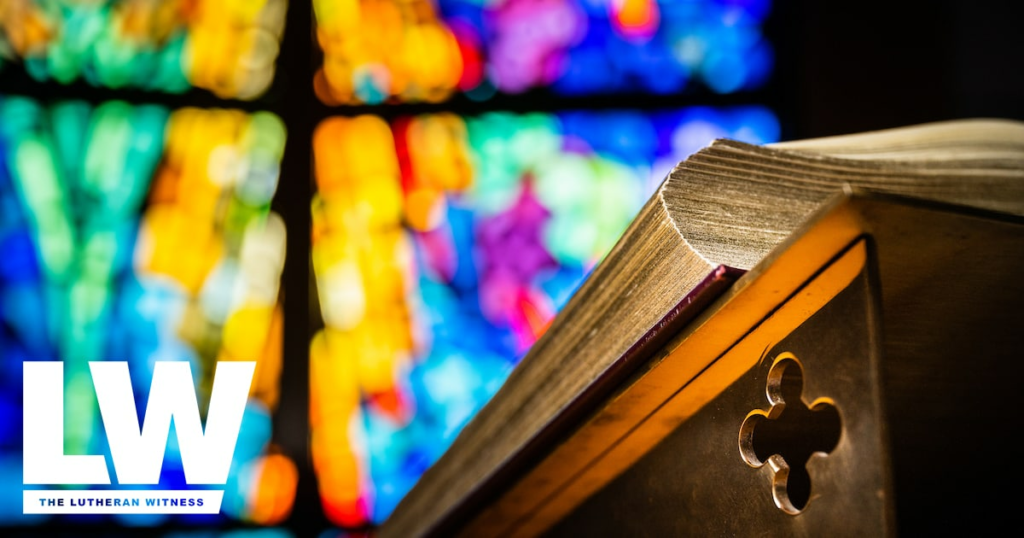Our Lord bids us to pray, but where do we start?
by Gregg Hein
It is bedtime. My younger children–ages 10, 8 and 5–have just finished jostling for position to brush and spit and complete the rest of the routine. The obligatory debate about whose room we’ll be praying in tonight is set-tled by my announcement: “We’re in here.” Their mother and I, kneeling on the floor in one of the bedrooms, are soon accompanied by them and their untimely energy. Once toys are unhanded and silliness subdued, I say, “Let’s pray.” But what should we say?
Years ago, when my older three were about the same ages, my wife and I asked that very question. We needed family prayers, but should we follow a form or encourage each to pray whatever was thought or felt?
As common as prayer may seem, it doesn’t come naturallynot true prayer, anyway. All manner of things pass for prayer to worldly eyes and earsfrom vague references to a man upstairs (“If you’re really up there . . .”) to pious pauses and gestures prior to a free-throw or an at-bat. Too often, prayers sound like letters to Santa. Hearts bent to our old, sinful nature can’t help praying, “My will be done” instead of “Thy will be done.”
Recognizing that true prayer does not come easily — or at least desiring to do it well — one of the disciples once said to Jesus, “Lord, teach us to pray, as John taught his disciples.” Jesus didn’t respond by encouraging the disciples just to say whatever was on their hearts. He knows that out of the heart come evil thoughts, murder, adultery and so forth. So He said, “When you pray, say, Father, hallowed be Your name’ and Your will be done.'”
Certainly Jesus did not forbid prayers from the heart. Neither did He say the Our Father alone should be prayed. But He gave those words to form a perfect prayer. Praying the words God Himself gave us assures our prayers are true, good and pleasing to Him.
As parents, pastors, Sunday School teachers and the like, we adults must be purposeful in teaching young ones how to pray. The Rev. Dr. Martin Luther, in his wisdom, outlined the basics in his Small Catechism, even titling it, “How the head of the family should teach his household to pray.”
In the evening make the sign of the holy cross and say: In the name of the Father and of the + Son and of the Holy Spirit. Amen. Then, kneeling or standing, repeat the Creed, the Lord’s Prayer, and if you choose, the Evening Prayer.
Additionally, in his short work to Master Peter the Barber, “A Simple Way to Pray,” Luther speaks of the great benefit of praying the Catechism. He writes:
That is, I think of each commandment as, first, instruction, which is really what it is intended to be, and consider what the Lord God demands of me so earnestly. Second, I turn it into a thanksgiving; third, a confession; and fourth, a prayer. . . . If you have more time, or the inclination, you may treat the Creed in the same manner and make it into a garland of four strands.
Jesus did not forbid self-made prayers, nor did Luther. But Luther knew whether with Psalter, Ten Commandments or the Our Father, praying the Word of God trains the faithfulfrom small children to adultsin the way of praying according to the will of God.
Years ago, my wife and I decided to pray the Catechism with our children. We still do. We kneel and pray as Luther encouraged. Making the sign of the cross with the Invocation, we call on the Triune God in whose name we were baptized and marked as ones redeemed by Christ the crucified. Then, confessing our sins and meditating on His eternal Law, we pray the Catechism.
Some of our children are nearly grown. Others are still small. But whether they are young or old, married or single, when it is bedtime in our house, we will still say together, “Lord, teach us to pray.”
—
About the Author: Gregg Hein is a member of Mount Olive Lutheran Church, Billings, Mont.
May 2012





